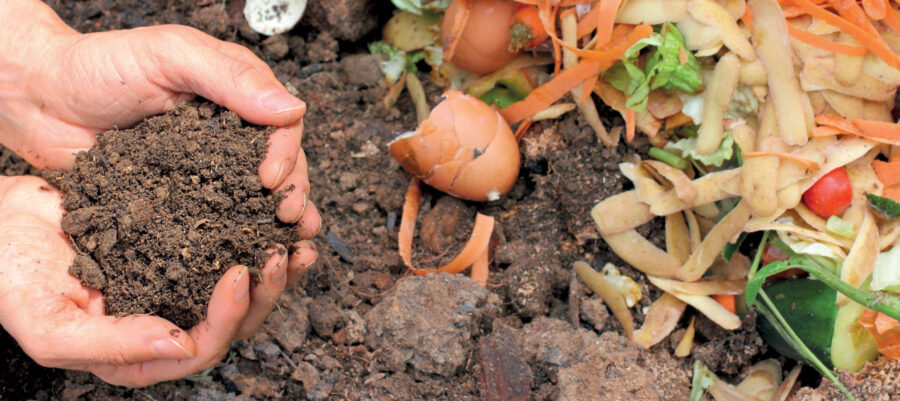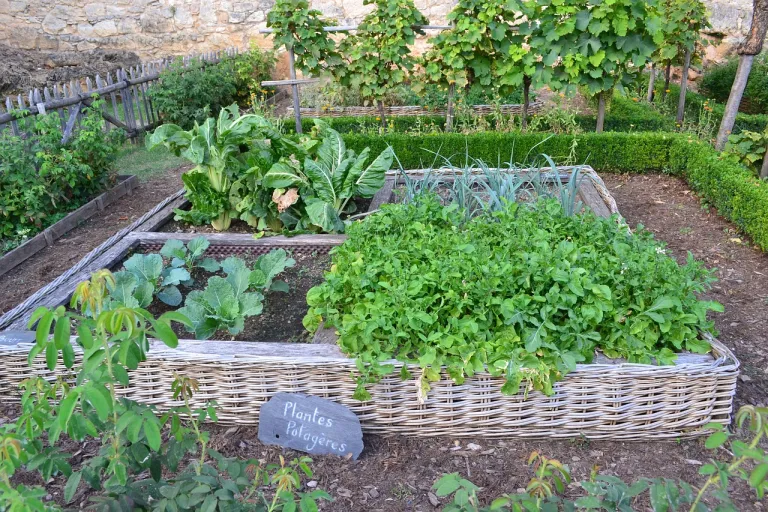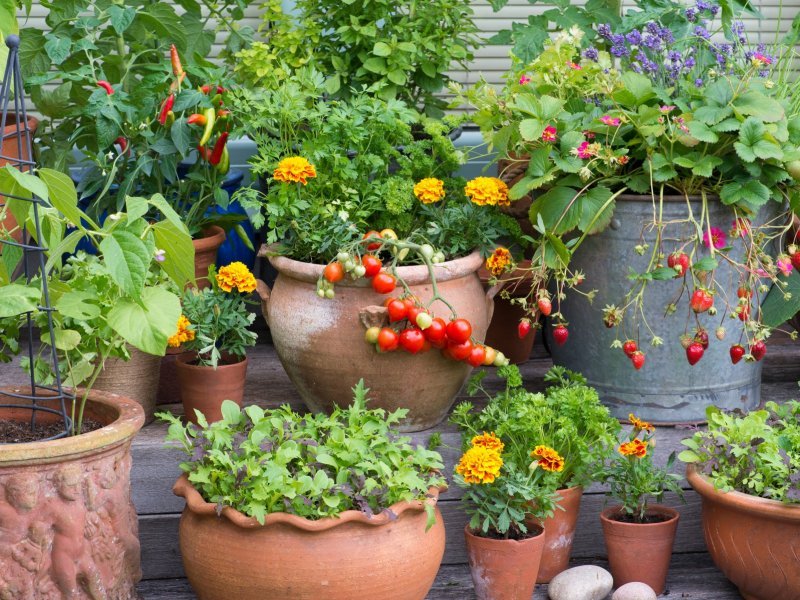Garden compost provides organic matter to improve your soil. Compost is decomposed kitchen and garden waste, including grass clippings.
Using at container is neater and speeds up decompositions. The bacteria which break down the vegetable matter need air, warmth, moisture and nitrogen to decompose successfully.
It is best to stand the bin on bare soil. Fork over the soil in the base area to aid drainage. Place a layer of twiggy material or straw in the bottom to provide good aerations, 8-10 cm/3-4 in deep. Bulky material soon shrinks down. Continue to fill the bin until you reach the top. Contents should be forked over to even out decomposition. Cover the heap to keep in the warmth. In summer your compost should be ready for use in three to four months. Winter cold slows down decomposition and it may take until the spring for it to be ready.
Pile on kitchen and garden refuse that rots easily. Stems and twigs will need shredding first. It is best to add compost materials in larger, mixed quantities if possible. A good way of doing this is to keep MO plastic bags beside the bin, one for kitchen waste and the other for garden waste, then mix together before adding.
Include a layer of manure when a thickness of about 15 cm/6 in has been reached. If this is not available use garden soil and add an activator such as seaweed meal, blood, fish and bone meal or a proprietary compost activator to introduce more bacteria into the heap. Keep the material in else heap moist you may need to water it in dry weather. Continue to add in layers as above.
Once the bin is full, lift it away and place it by the side of the routing heap. Cover the heap and start a new one
WHAT TO COMPOST
• Kitchen vegetable waste
• Teabags, tea leaves. coffee grains
• Eggshells
• Vacuum cleaner waste
• Old potting soil
• Lawn mowings
• Thin prunings
• Bonfire ash
• Straw
• Animal manure
• Seaweed
• Autumn leaves. It is best to rot down autumn leaves on their own in a wire basket. These take longer to decompose — up to two years — but the resulting leafmould is ideal for use as potting or seed compost.
Digging not only allows you to introduce soil-improving conditioners but also aerates the soil and exposes pests to be gobbled up by enthusiastic predators. To incorporate manure or compost put a layer in the bottom of the trench, then half-fill it with soil. Add mare manure and finally fill the trench with soil.
WHAT NOT TO COMPOST
• Animal waste such as meat scraps, which could attract rats
• Diseased plant material
• Perennial weeds
• Evergreen leaves like holly or ivy (you can include conifer needles)
• Woody material
• Any man-made waste (plastic etc.)
You can never have too much compost. For extra supplies visit market stalls and greengrocers’ shops at the end of the working day. Use seaweed. straw or green bracken (check first with local regulations that gathering them is legal), or manure from riding stables.









